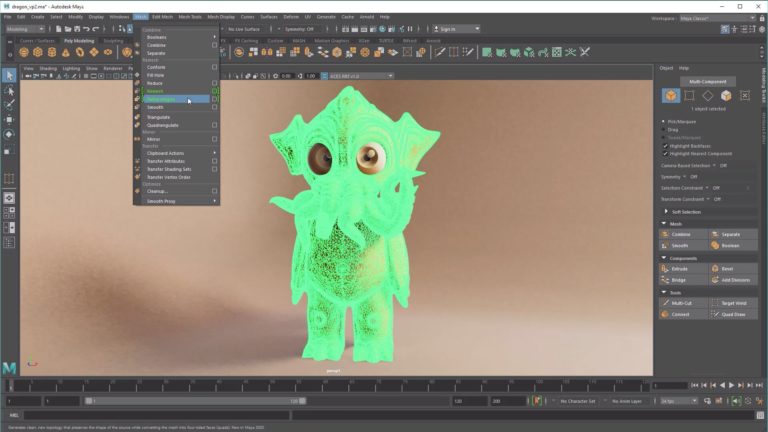a sequence, then batch that sequence within Photoshop, applying a
Photoshop Action script to each frame in the animation.
select your favorite sequence method. I use TIFF sequence. Once the
sequentially numbered files are rendered to their own folder, all you
have to do is open Photoshop, then select File -> Automate ->
Batch. Within the Batch dialog, you can apply your favorite Action
Script to every file in the folder.

describe an Action in Photoshop. To open the Actions Window in
Photoshop CS, use Option-F9. Create a new Action by clicking the small
page icon in the bottom of the Actions Window. Then, simply go through
the Photoshop steps necessary to add the desired filter (or filters) to
the layer. Photoshop will save the steps that you take, including the
parameters for each filter applied. Because you can save multiple
filters within Photoshop’s filter gallery, it’s easy to build up
complex filter Actions very quickly.

pulldown menu. Apply the specific script to a single document, or to an
entire folder of images.
import the frames back into After Effects to use in a composition.
Alternatively, you may wish to simply gather them in order to render a
movie. (Don’t forget QuickTime Pro lets you open a sequence and save it
as a regular QuickTme Movie.)
import into Photoshop is the Filmstrip file format. Filmstrip is a
compiling technique that places a series of frames into one ".flm"
file, which can then be opened in Photoshop and edited as one document.
Opening the.flm file in Photoshop reveals tags that After Effects has
placed in between each frame. The grey strip tells After Effects how to
discern the individual frames when you import the file back into AE.
But be sure that you never crop or change the image/canvas size of
the.flm file or blur the edge of the grey box into the image or
delete/obliterate the grey bar.

Each.flm will render to be the size of a "none" QuickTime of the same
duration. Each frame of the animation is spread out across
(top-to-bottom) a massive canvas. To create a Photoshop Filmstrip,
you’ll need to change the save format in After Effects’ Output Module.
When creating a movie from a project, select the Output Module, and
select "Filmstrip" from the format pull-down menu.
bar. Render your composition with all layers turned off. Select
"Filmstrip." Select "RGB+Alpha" in the Channels/Video Output portion of
the Output Module. This gives you a clean sequence of black frames and
grey reference bars. The.flm file also contains the alpha channel for
the grey bar. You can use it to cut and paste all of the bars over your
effected/filtered image.flm file.

to affect the image. Remember not to damage the grey bar, unless you’ve
rendered a "grey-bar" file to correct it. Of course, you can also paint
with Photoshop if you want to keep away from the Vector Paint and Paint
features of AE.

available option from Photoshop alone. You must have the embedded After
Effects reference pixels so that After Effects can decode it on its
return.

Freelance Animator
Los Angeles, CA
Corps senior artisan in the Particle Effects Team and teaches at the
Art Center School of Design in Pasadena, California.
Effects’ plug-ins folder and use them on animations, with the new
versions of Photoshop filters and After Effects 6, it is no longer an
effective solution. (Remember how you could share your Photoshop
plug-ins with earlier versions of After Effects-4.x and before-but now
can’t get those plug-ins to show up in After Effects?) Fortunately,
After Effects 6.x maintains a few old tricks that work just fine. You
can still work on your animations in Photoshop using the Filmstrip
(.flm), Photoshop Sequence, or as a Photoshop Layered file (which is
not covered here). To get your entire animation over to Photoshop, you
must render it first in After Effects. Then you can use Photoshop’s
filters or some of its other tools to create rotoscoped mattes, cel
animations, or execute even more operations not yet available under
After Effects 6.x.
a1413-1/2 W. Kenneth Road, #239
Glendale, CA 91201
komaruyama@mac.com
Did you enjoy this article? Sign up to receive the StudioDaily Fix eletter containing the latest stories, including news, videos, interviews, reviews and more.










Leave a Reply